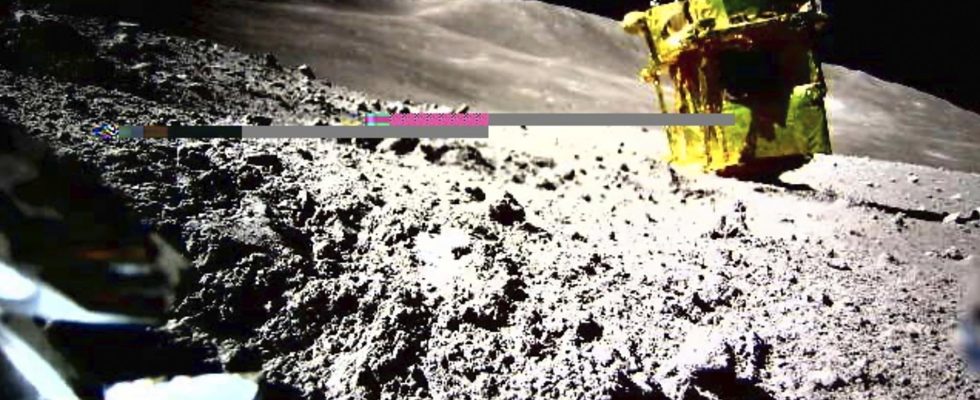unsaveSave
expand-left
fullscreenSlim on a picture taken by the probe’s small lunar vehicle LEV-2 (Lunar Excursion Vehicle 2). Photo: Jaxa/Takara Tomy/Sony/Doshisha Via AP/TT
The US’s latest probe didn’t make it. But Japan’s tiny lander now appears, against all odds, to have survived another brutal night on the moon. “We got a reply from Slim last night!” exclaims the country’s space agency with relief.
The Slim (Smart Lander for Investigating Moon) probe landed on the moon in January. A great success, in that Japan is thus the fifth country to have succeeded in landing a functioning craft on our neighbor in space.
However, the landing did not go completely according to plan – Slim’s solar panels ended up crooked, and therefore have not been able to draw as much power as intended.
The same thing happened to the American Intuitive Machine probe Odysseus when it touched down in February. And poorly charged batteries mean more difficulty coping with the grim lunar night, which lasts two Earth weeks with temperatures of around minus 130 degrees.
After the last night, the Intuitive Machines have received no sign of life from Odysseus, and threw in the towel. “‘Odie’ has permanently gone to sleep, having gone down in history as the first commercial lander to land on the moon,” the company wrote on X (Twitter) this past weekend.
A tense wait ensued regarding how Slim had fared. And then, on Thursday, a relieved post: “Last night we got an answer, a confirmation that the spacecraft passed a second night on the moon!”, writes the space agency Jaxa, and posts a grainy new image from Slim’s surroundings.
The news is a bit of revenge for Jaxa, which previously stated that the project’s main goal is to test a new landing technology that could allow future missions to go down on the moon “where we want, instead of where it’s easy to land.”
